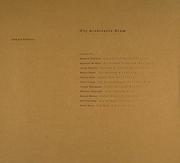| Listing 1 - 2 of 2 |
Sort by
|

ISBN: 1854902032 1854902024 9781854902030 Year: 1993 Publisher: London: Academy editions,
Abstract | Keywords | Export | Availability | Bookmark
 Loading...
Loading...Choose an application
- Reference Manager
- EndNote
- RefWorks (Direct export to RefWorks)
In 1964 Hasegawa graduated from the Department of Architecture, Kanto Gakuin University, the strongest formalist school in Japan. Since then she has challenged the current tendency to analyze in a formalist way. Koji's essay suggests that Hasegawa's work should be viewed in social terms. He dismisses those who see only a gaudy facade, asserting that Hasegawa's work should not be regarded simply as stimulating design Hasegawa recognizes the potential for society's transformation. Her dialogue-based programme allows for an empathetic approach to architecture. In her own essay, she cites the Shiranui Psychiatric Hospital and Stress Care Centre in Ohmuta, where she and the client discussed for three years the relationship between architecture and medical care, to ensure a holistic architectural response. This experimental therapeutic space was achieved through use of light reflected from the sea, which also registers the natural rhythm of the tides. Similarly, for the Shonandai Cultural Centre, Hasegawa involved the local residents in close communication with the design team. Through her reciprocal method of planning, she provides a flexible type of architecture which accepts a diversity of individuals
Architecture --- History --- Hasegawa, Itsuko --- Architecture, Modern --- Hasegawa, Itsuko. --- 長谷川逸子 --- Ville --- Urbanisme --- Dessin --- Dessin d'architecture


ISBN: 0262181576 9780262181570 026268098X 9780262680981 0262367785 9780262367783 Year: 1994 Publisher: Cambridge, Massachusetts : MIT Press,
Abstract | Keywords | Export | Availability | Bookmark
 Loading...
Loading...Choose an application
- Reference Manager
- EndNote
- RefWorks (Direct export to RefWorks)
Examines the social uses of architectural drawing: how it acts to direct architecture; how it helps define what is important about a design; and how it embodies claims about the architect's status and authority. Case study narratives are included with drawings from projects at all stages.
Architectural drawing --- Architectural design --- Architects --- Dessin d'architecture --- Design architectural --- Architectes --- Interviews --- Entretiens --- -Professional employees --- Design --- Structural design --- Drawing, Architectural --- Plans --- Communication in architectural design --- Drawing --- Mechanical drawing --- -Interviews --- Painting --- sketches --- Architecture --- architectural drawings [visual works] --- Piano, Renzo --- Vieira, Alvaro Siza --- Moneo, Rafael --- Hasegawa, Itsuko --- Architectural drawing. --- Architectural design. --- Social aspects. --- Architects - Interviews --- Architectes - Entretiens --- Interviews. --- ARCHITECTURE/Architectural History/Modern Architecture
| Listing 1 - 2 of 2 |
Sort by
|

 Search
Search Feedback
Feedback About UniCat
About UniCat  Help
Help News
News